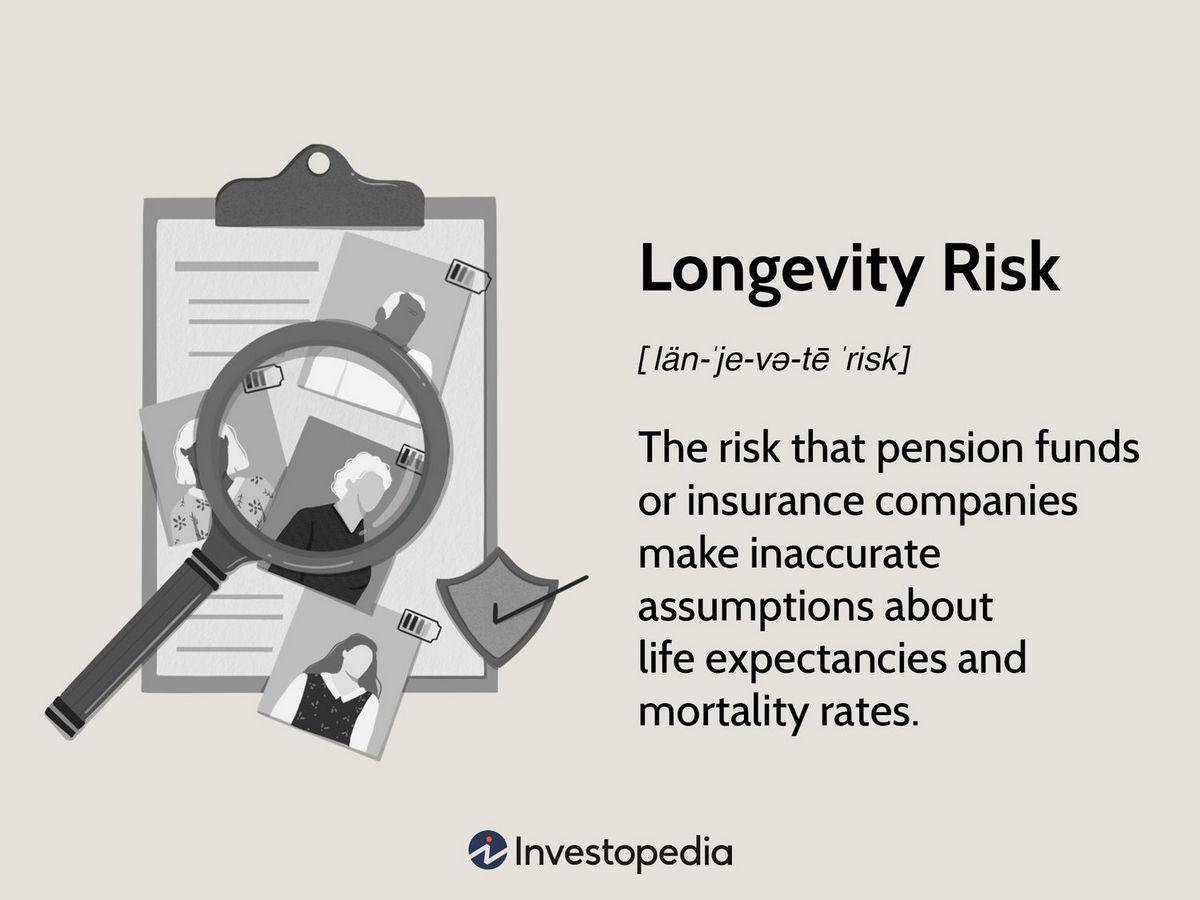Longevity Risk What it is How it Works Special Considerations

Longevity Risk: What it is, How it Works, Special Considerations
What Is Longevity Risk?
Longevity risk is the chance that life expectancies and survival rates exceed expectations or pricing assumptions, resulting in greater-than-anticipated cash flow needs for insurance companies or pension funds.
The risk exists due to increasing life expectancy trends among policyholders and pensioners and growing numbers of people reaching retirement age. These trends can result in higher payout levels than initially accounted for. The plans exposed to the highest levels of longevity risk are defined-benefit pension plans and annuities, which guarantee lifetime benefits.
Key Takeaways
– Longevity risk is the risk insurance companies and pension funds face when life expectancy and mortality rate assumptions are inaccurate.
– Even slight changes in life expectancies can increase longevity risk.
– The aging population and the number of people reaching retirement age contribute to longevity risk.
– Defined-benefit pension plans and annuities with lifetime retirement benefits have the highest risk.
– Transferring longevity risk considers current mortality rates and longevity trends.
Understanding Longevity Risk
Average life expectancy figures are increasing, and even minimal changes can create solvency issues for pension plans and insurance companies. Precise measurements of longevity risk are unattainable due to unknown limitations in medicine’s impact on life expectancies. Additionally, the number of people aged 65 or older is projected to reach 95 million by 2060, from roughly 56 million in 2020.
Longevity risk affects governments as they must fund retired individuals’ pensions and healthcare despite a shrinking tax base. Corporate sponsors funding retirement and health insurance obligations also face longevity risk related to their retired employees. Individuals without government or corporate support must manage the risks associated with their own longevity.
Special Considerations
Organizations can transfer longevity risk through a single premium immediate annuity (SPIA), where a risk holder pays a premium to an insurer. Another option is to eliminate longevity risk while keeping the underlying assets through liability reinsurance. In this model, the premium is spread over the expected term of liability, aligning premiums and claims.
When transferring longevity risk, two primary factors to consider are current mortality levels and longevity trend risk. Mortality levels vary across socioeconomic and health categories, while longevity trend risk is the systematic trajectory of risk that applies to an aging population.
The most direct offset to systematic mortality trend risk is holding exposure to increasing mortality, such as certain life insurance policies. Uncertainty around exposure to longevity trend risk, particularly its systematic nature, is a reason for pension plans or insurance companies to cede risk.



